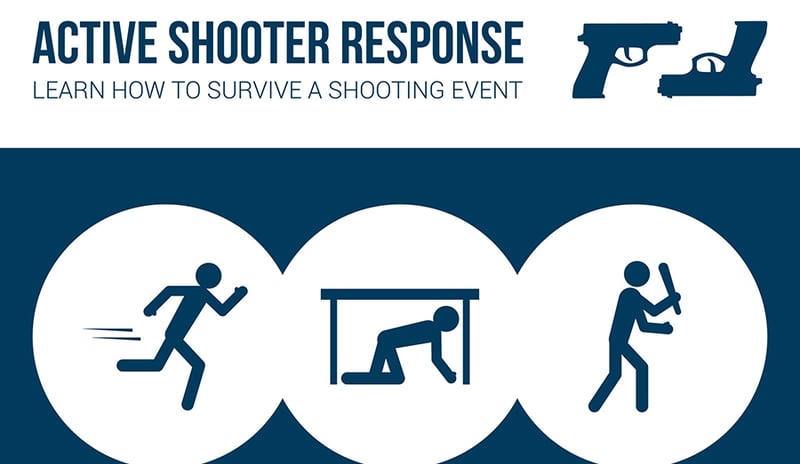
The Department of Homeland Security has issued guidance on how employees should react in an active shooter situation. Click here to download the Wallet-sized cards
Running out of the building is the best option, if possible. Hiding can also be an effective strategy. Stay out of the shooter’s view and lock doors; silence cell phones and pagers. The DHS recommends that non-law enforcement personnel should only attempt to incapacitate the shooter as a last resort, and only if his or her life is in danger.
1. Run
Identify an escape route and leave belongings behind. If within sight of the shooter, run in zig-zag patterns while looking for cover. If on a higher floor, take the stairs, not the elevator; if on a lower floor, be prepared to jump through a window.
2. Hide
Look around for the two nearest exits.
If you’re in an office or room, stay there and secure the door.
If you have time to choose a hideout, look for a room near the elevator core, especially if they can be barricaded. These rooms often have load bearing walls that bullets cannot penetrate.
3. Fight
Confront the shooter only as a last resort.
- If you have a weapon, attempt to incapacitate the shooter
- Act with physical aggression and throw items at the active shooter
Working with Law Enforcement During an Active Shooter Situation
An active shooter situation is an extremely stressful and confusing situation. When your employees encounter law enforcement personnel, it’s important that they remain calm and follow instructions. Do not stop to ask officers for help or direction when evacuating.
To avoid cases of mistaken identity, your employees should:
- Put down any items in their hands (i.e., bags, jackets)
- Raise hands and spread fingers
- Keep hands visible at all times
- Avoid quick movements toward officers such as holding on to them for safety
- Avoid pointing, screaming or yelling
Employees should also be prepared to share any relevant information they may have with law enforcement, such as the location of the active shooter or shooters, number and type of weapons held by shooters, or the number of potential victims at the location.





Leave a Comment